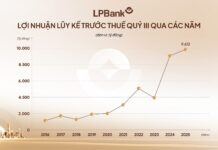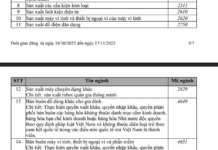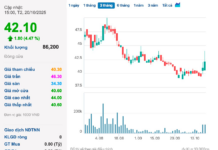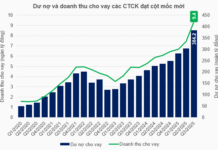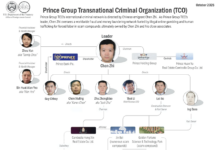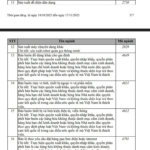
A worker at the Shirt and Vest Factory of Garment Corporation No. 10 in Sai Dong, Long Bien District, Hanoi. Photo: Anh Tuan/VNA
The qualitative requirements for greening are being quantified and turned into specific policies for manufacturers and consumers, especially in terms of taxation and waste/emission management.
In the European Union (EU) market, there is a strong focus on implementing the European Green Deal Strategy, aiming to reduce net emissions by 55% by 2030 compared to 1990 levels and achieve carbon neutrality by 2050.
According to Vietnam’s Ministry of Industry and Trade, the European Green Deal Strategy serves as a crucial policy pillar and overarching framework, providing the basis for the EU to adjust and propose a series of strategies, action plans, and legal frameworks for various sectors, including climate, energy, trade, agriculture, industry, and circular economy.
Specifically for the textile and garment industry, the EU is focusing on the Strategy for a Sustainable and Circular Textile Industry by 2030, which includes notable regulations such as the Eco-Design Regulation for Sustainable Products, the Waste Directive, and the Extended Producer Responsibility Guidance.
In response to these new requirements and challenges, Garment Corporation No. 10 has been implementing green production practices over the last three years. This includes investing in modern machinery and equipment that consumes less electricity and adopting solar energy and rooftop solar panels. They also focus on linking production chains in Vietnam and abroad to maximize the use of recycled and natural products, ensuring the proportion of raw material origin from fibers in the composition of products meets customer requirements.
Mr. Than Duc Viet, General Director of Garment Corporation No. 10, emphasized that greening production is no longer a choice but a mandatory requirement. Vietnamese businesses’ gradual adaptation to these practices will contribute to sustainable export growth.
Even during the production process, there is a shift from fossil fuels to biomass energy to minimize carbon emissions. In 2024, if all of Garment Corporation No. 10’s projects are operational, it is expected to reduce carbon emissions by more than 20,000 tons.
Vinatex, the Vietnam National Textile and Garment Group, is also applying carbon reduction solutions by measuring the carbon footprint throughout the product life cycle and developing a green and circular production strategy. So far, they have achieved a 2% reduction in electricity consumption per unit of product compared to 2022 among its members.
However, according to the Vietnam Textile and Apparel Association (VITAS), the domestic legal corridor is still limited, lacking specific policies and regulations for the textile and garment industry regarding the circular economy. The regulations related to greenhouse gas inventory and carbon taxation are also lagging compared to the international implementation timeline.

Maxport Hai Hau Company in Nam Dinh province has implemented many solutions for green production and sustainable growth. Photo: Tran Viet/VNA
Ms. Nguyen Thi Tuyet Mai, Vice President of VITAS, shared that major fashion brands worldwide are increasingly prioritizing green businesses or requiring their suppliers to adopt green practices. This is seen as a measure to protect their reputation and business philosophy while also meeting stringent legalized regulations.
However, it is worth noting that meeting green standards in the textile and garment industry requires a substantial conversion cost and a lengthy transition period. As most Vietnamese textile and garment exporters are small and medium-sized enterprises, converting internal control systems and conducting greenhouse gas inventories need to be faster and less costly.
“Therefore, while the green transition is inevitable and non-negotiable, more than 80% of small and medium-sized enterprises in the industry currently lack the capital for green production investment,” Ms. Mai emphasized.
To navigate these challenges, textile and garment businesses are focusing on agile management, maximizing market opportunities, and targeting technically challenging and small orders with high added value instead of competing on price with common products. They also keep a close eye on market trends and forecasts, developing scenarios and strategies accordingly.
Advantages of Producing Green Hydrogen from Offshore Wind
In order for clean hydrogen to develop and thrive in Vietnam, it is necessary to implement supportive policies from the Government to ensure the competitiveness of clean hydrogen sources.









